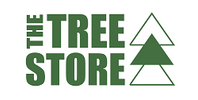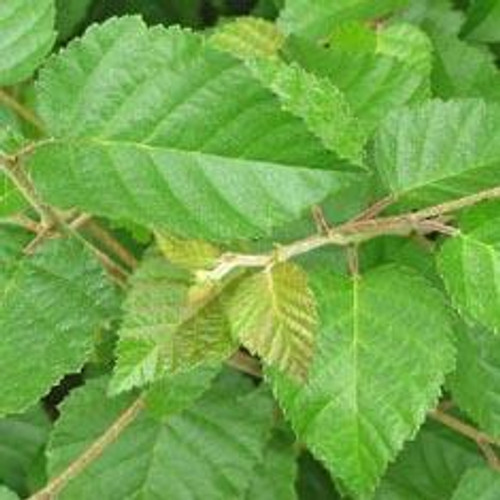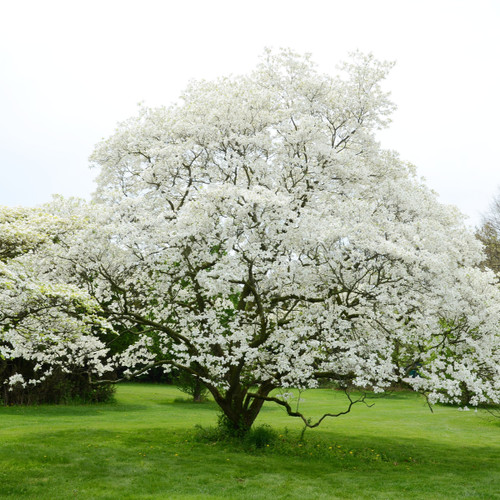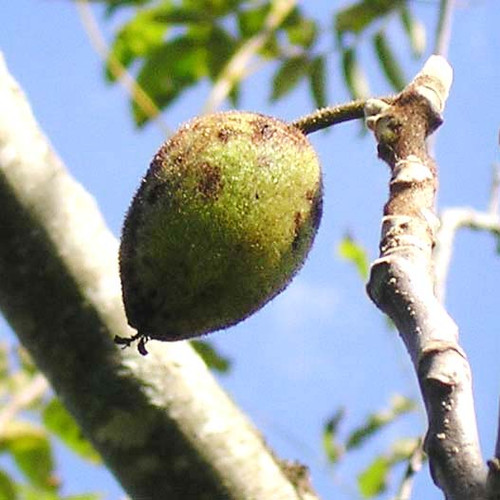Cannot Ship To: AK,HI
Please Read Our Store Policies HERE Before You Order!!
Introduction:
The Paper White Birch Tree (Betula papyrifera), also known as White Birch or Canoe Birch, is a fast-growing, deciduous tree celebrated for its iconic white bark that peels in thin layers and its striking yellow fall foliage. This cold-hardy tree thrives in cooler climates and is a popular choice for adding year-round visual interest to landscapes. The Paper White Birch is perfect for naturalized areas, along water features, or as an ornamental shade tree in any garden. Its slender form and delicate leaves make it a standout feature in any setting.
Plant Summary:
- Size: Grows to a height of 40-70 feet with a spread of 25-35 feet.
- Foliage: Delicate, dark green leaves turn bright yellow in the fall.
- Flowers/Fruit: Inconspicuous yellow-brown catkins in spring, followed by small, winged seeds in late summer.
- Growth Habit: Upright with a narrow, rounded canopy.
- Sunlight: Prefers full sun.
- Soil: Thrives in moist, well-drained soils but adapts to a variety of soil types, including sandy or rocky soils.
- Hardiness: Hardy in USDA Zones 2-6.
- pH Level: Prefers slightly acidic to neutral soils (pH 5.0 to 7.0).
- Pruning: Prune in late winter to remove dead or damaged branches and to shape the tree.
- Pests/Diseases: Susceptible to bronze birch borer, leaf miners, and aphids.
Pollination:
The Paper White Birch Tree is wind-pollinated, with its catkins releasing pollen in the spring. While it is not typically grown for its flowers or fruit, the tree’s beautiful white bark and bright yellow fall foliage provide year-round ornamental value. Planting in groups can enhance its visual impact and create a striking display in naturalized areas.
Key Benefits:
- Striking white bark adds year-round visual interest, especially in winter.
- Fast-growing tree provides shade and beauty with minimal maintenance.
- Bright yellow fall foliage creates a stunning seasonal display.
- Thrives in cooler climates, making it ideal for northern gardens.
- Adaptable to a variety of soil types, including sandy and rocky soils.
Care Instructions:
- Light: Prefers full sun for optimal growth and bark development.
- Water: Keep soil consistently moist, especially during dry periods.
- Soil Type: Grows best in moist, well-drained soils but adapts to sandy or rocky soils.
- Pollination: Wind-pollinated, producing inconspicuous catkins in spring.
- Growth Rate: Fast-growing, reaching up to 2-3 feet per year.
- Max Height/Width: Reaches 40-70 feet in height and 25-35 feet in width.
- Pruning: Prune in late winter to shape the tree and remove deadwood.
Why You'll Love It:
The Paper White Birch Tree is an iconic addition to any landscape, offering year-round beauty with its white, peeling bark and stunning yellow fall foliage. Its fast growth and adaptability to various soil conditions make it a versatile and reliable tree for a wide range of landscapes. Whether planted as a specimen tree, in a group, or along a water feature, the Paper White Birch adds elegance and grace to any setting.
Planting Tips:
Plant your Paper White Birch Tree in early spring or fall in a sunny location with well-drained soil. Dig a hole twice as wide as the root ball and plant at the same depth it was growing in the nursery. Water thoroughly after planting and mulch around the base to retain moisture. Regular watering during the first few years will help the tree establish a strong root system.
Flower Color:
Yellow-brown (catkins)
Plant Class:
Deciduous Tree
Plant Name:
Paper White Birch Tree
Shipping Details:
Your Paper White Birch Tree will be shipped as a bare root plant, carefully packaged to ensure it arrives in optimal condition. Bare root plants are shipped during dormancy to promote successful transplanting and establishment in your landscape.
1 Review Hide Reviews Show Reviews
-
Butternut
despite other trees in order arriving dead- and the requirement to ship back entire order- these birch trees arrived healthy and are growing well










